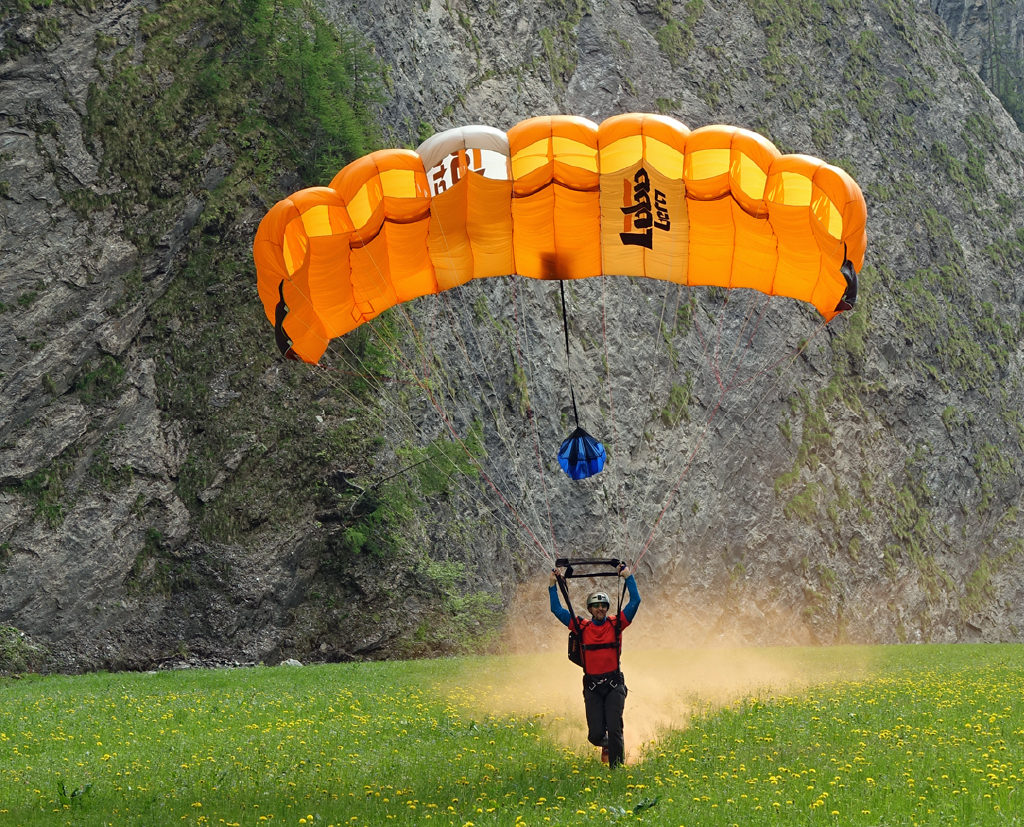The Lobo and the Lynx have been out for a while now, but there’s still a bit of confusion hanging in the air as to the differences and similarities between the two canopies.
C’mon, y’awl! The Lobo and the Lynx are obviously different. One is named after a big dog and the other is named after a big cat.
Ha! Sorry! We’re kidding. We understand that the specs are a little confusing–so we put together this little primer to help you sort out the best possible choice for your jumping style and situation. As it turns out, the Lobo and the Lynx have a whole bunch of factors in common. They’re siblings, after all.
Wait–they’re what?
The Lynx was originally developed from an open-nosed prototype of the Lobo–the first versions didn’t have a rolled nose at all.
Before we started experimenting with the rolled nose that gives the Lobo some of its distinct flying characteristics, the design had a totally open nose. (In future versions, we closed that nose up 50 percent to push the development envelope, then opened that nose up, bit by bit, to arrive at the final Lobo design.)
A few of our teammates–who love jumps with short canopy flights–fell in love with that open-nosed version. They kept asking for it. We turned their obsession for the early prototype into what is now the Lynx.
Which one is higher-performance?
It really depends what kind of jumping you’re doing and what performance you’re looking for. The Lobo is a little zippier; because it has a longer lineset and a more aggressive profile, it flies phenomenally and is really fun in the air. That said: it makes sense that if you regularly do jumps with little to no flight, you’re not going to get the value out of those fun flying dynamics … so it stands to reason that the best home for a Lobo is one that gives it a lot of airtime.
The Lynx has many of the flying characteristics of the Lobo in big air (due to their shared “DNA”). However, it gives that sweet open-nose feeling when you’re jumping from lower objects, without the look of end-cell closure that bothers some people.
… So how about the Lynx and the FLiK 2?
Given that information, it might seem like the Lynx and the FLiK 2 are the super-similar canopies. That isn’t quite true, either. Sure, they both have open noses. However, there are considerable differences in airfoil shape, line length and suspension points. The FLiK 2 is even more responsive than the original FLiK (which is saying a lot!). Let’s put it this way: You can get into a bit of a better swoop on the Lynx because of the longer lines, but if you need recovery right now, the FLiK’s shorter line set and pushed-back D-lines would help you to recover just that fraction of a second quicker.
Can I just ignore the differences and use the one whose name I like best?
If you’re tempted to make the choice based on whether you’re a cat person or a dog person, we would like to cordially invite you to tour the Apex BASE factory in southern California and receive some preaching.
At the end of the day, know this: BASE canopies are very similar animals, because they’re all designed to do three things: open fast, open on-heading and land reliably. That said: modern innovations have greatly expanded the envelope of what a BASE canopy is designed to do. You can get away with jumping canopies in situations they weren’t designed for–free falling something that clocks in at under 200 feet–but it’s not something we would necessarily suggest making a habit of. Choose the right tool for the job.
If you have additional gear questions, don’t be a stranger! Reach out and ask. We’re here to help.


